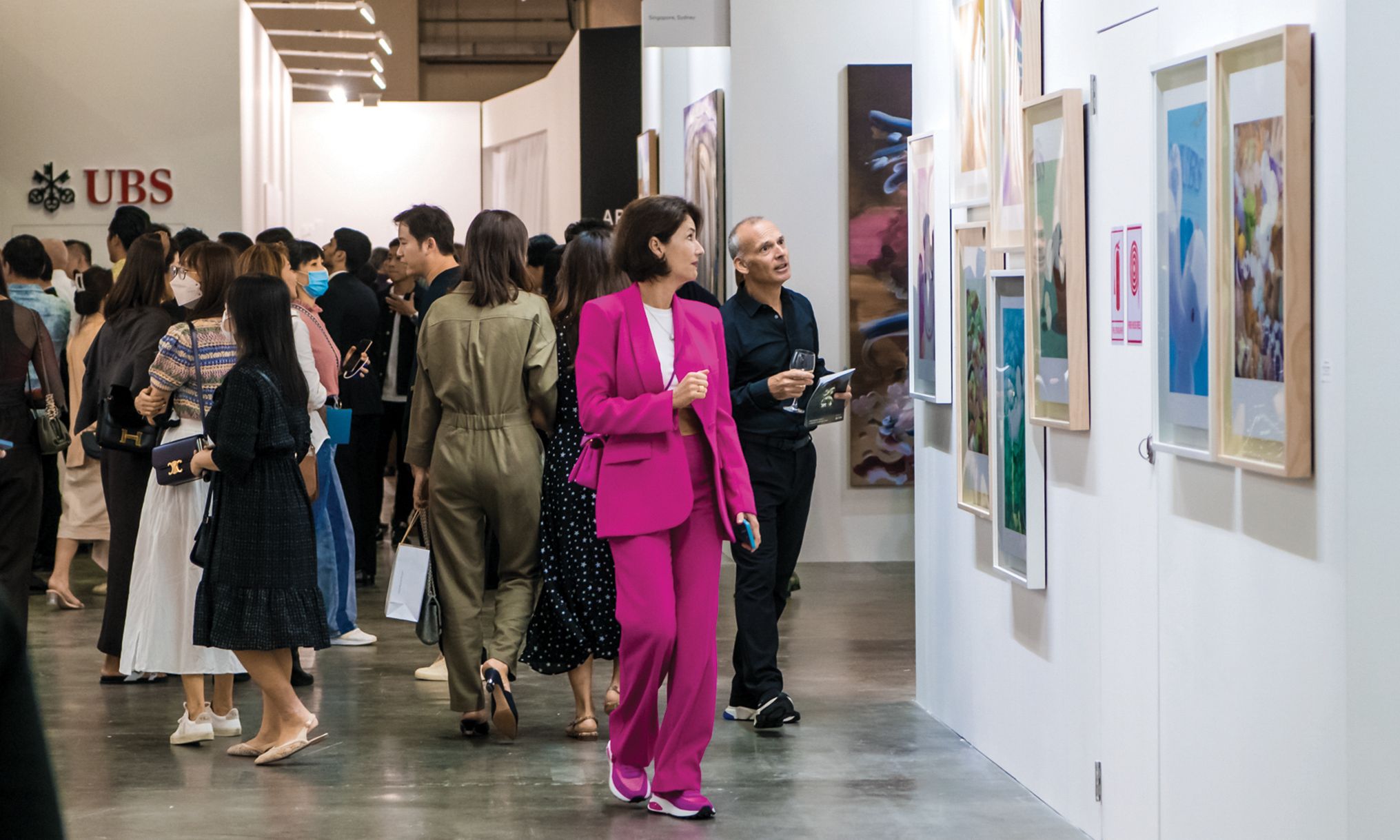Singapore may lack a strong domestic art market but Art SG believes the city’s history as a cultural melting pot offers a compelling regional proposition Photo: Debbie Y, Courtesy of Art SG
The potential for a sophomore slump hangs over Art SG in Singapore, the premier international art fair in Southeast Asia, which sees a 29% drop in exhibitor numbers from the first edition held last year. This month (19-21 January), 116 galleries will gather at the Marina Bay Sands Expo and Convention Centre, in the heart of the city state’s financial district. Among the 39 exhibitors not returning are major names such as Esther Schipper, Sadie Coles HQ, Skarstedt and Perrotin.
“In the wake of the Covid-19 pandemic and existing global inflationary pressures, we recognise that galleries, like many other organisations around the world, are working out how to approach the costs of doing business in today’s economic environment,” says Magnus Renfrew, the fair’s co-founder. He points out that Art SG’s second outing will still take place at a “respectable scale”, with the fair welcoming back a handful of leading international galleries, such as Thaddaeus Ropac, Gagosian and White Cube. One third of exhibitors will come from Southeast Asia, including local galleries STPI and Art Seasons, as well as SAC from Bangkok. Around 68% of exhibitors come from the wider Asia Pacific region, including Kukje (Seoul, Busan), Station (Melbourne, Sydney) and Tokyo’s Maki.
Promoting Singapore’s position as the “natural hub” for the Asia Pacific region is central to the success of the Art SG. “If one looks at the population of Southeast Asia, it’s the same size as Europe,” Renfrew says. “Logic dictates that it should have one major fair.” But reports from some galleries last year of lacklustre sales at Art SG suggest that Singapore is struggling to attract a substantial art trade, not least because “the city’s local collector base is too small to sustain a fair of this scale by itself”, according to Renfrew.
Magnus Renfrew, Art SG’s co-founder Joyce Yung Productions
For this reason his team has doubled down on VIP outreach throughout the region. Over the past eight months, Art SG has staged events in Jakarta, Shanghai, Manila, Sydney and Bangkok to drum up interest—efforts that could pay dividends this month. Art SG has also been able to draw on the wider client list of its parent companies, The Art Assembly and Angus Montgomery Arts, which organise five other Asia Pacific art fairs: Taipei Dangdai, India Art Fair in New Delhi, Tokyo Gendai, Sydney Contemporary and Photofairs Shanghai. Art Basel’s parent company MCH continues as a silent partner with a 15% stake. Inroads are also being made with the region’s cultural institutions: this year Art SG is organising a tour of the Thailand Biennale in Chiang Rai (until 30 April) for its VIPs.
The list of potential local collectors is growing too. Singapore’s long-standing status as a wealthy entrepot was bolstered further during the Covid-19 pandemic by an influx of wealthy individuals fleeing Hong Kong and mainland China. According to Renfrew, some of those who fled are now setting up art initiatives, a few of which will be announced in due course. They join existing ventures from local private collectors that will run alongside the fair. Pierre Lorinet will stage an exhibition of works from his collection at the Gillman Barracks gallery hub and the private foundation The Institutum will host the exhibition Translations: Afro-Asian Poetics, curated by Zoe Whitley, director of London’s Chisenhale Gallery.
In many ways, Singapore is no hard sell. It remains one of the most attractive places for businesses in Asia, levying no capital gains or inheritance tax. Tourists can claim a goods and services tax (GST) exemption if the works of art they purchase in Singapore leave the country or go to a freeport. The 8% GST (raised from 7% last year) that is added to purchases that do not meet one of these criteria does, however, make buying art in Singapore more onerous than in tax-free Hong Kong.
Even one of the city’s perceived flaws—its lack of a “strong domestic context” compared to other Asian art market hubs—is turned into a positive by Renfrew. “Singapore is the only neutral territory left in Asia”, he says, referring both to the English-speaking city’s ability to bridge the West and East, and its relatively safe position amid rising geopolitical tensions between China and its neighbours. These reasons, along with its ability to absorb multiple cultures into a melting pot, make it a “compelling proposition”.
• Art SG, Marina Bay Sands Expo and Convention Centre, Singapore, 19-21 January

